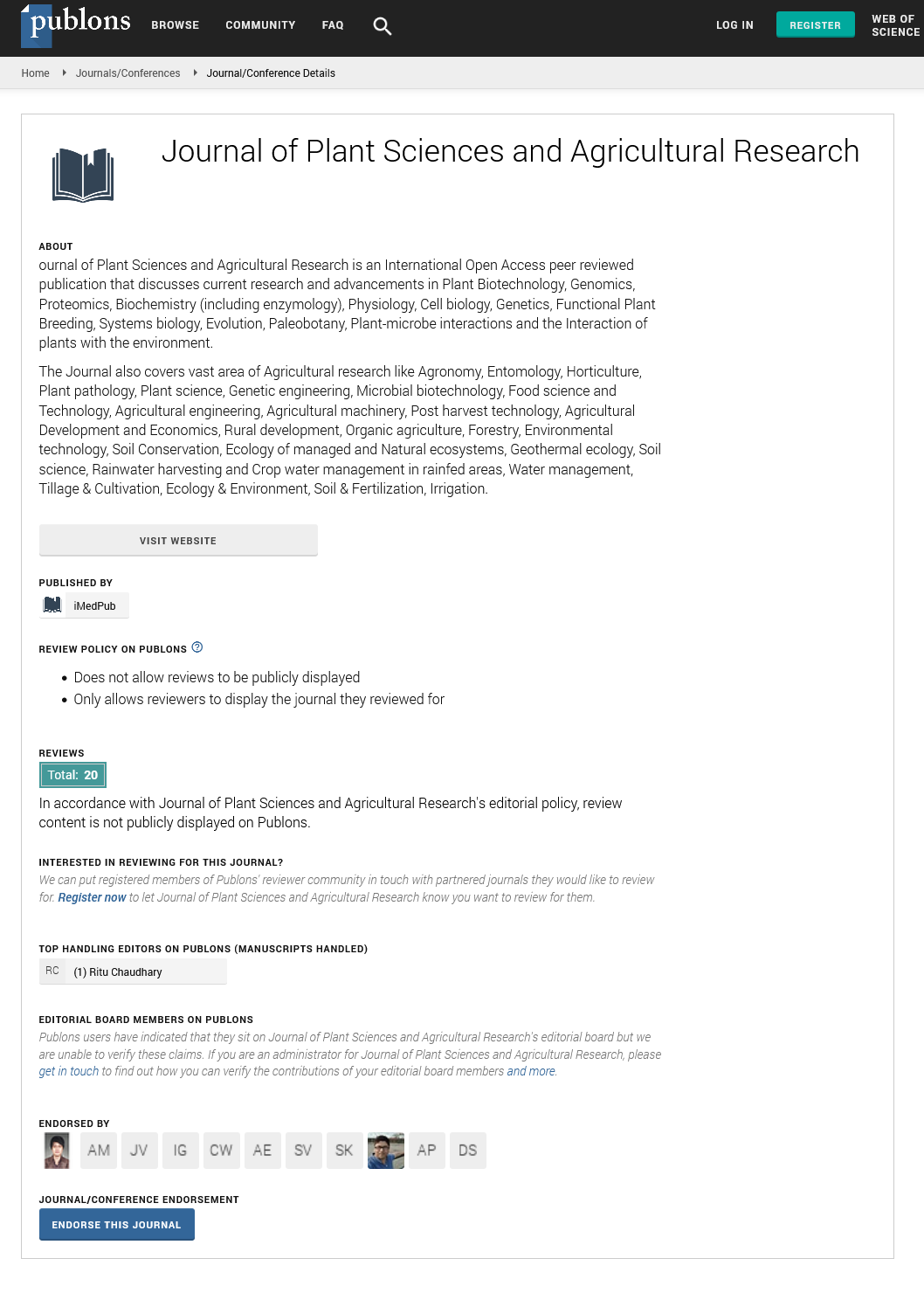Abstract
Spatial Distribution of Phytochemical and Antifungal Evaluation of Six Medicinal Plants in South-West, Nigeria
The phytochemical and antifungal evaluations of the leaves of six plant species (Chromolaena odorata, Euphorbia hirta, Ficus asperifolia, Momordica charantia, Nicotiana tabacum and Spondias mombin) in Nigeria were studied. The leaves of these plants were collected from the wild, air-dried and pulverized into fine powder for the phytochemical constituents and minimum Inhibitory concentrations. The powdered leaves were screened and results were properly recorded as observed. Based on MIC, water extract of sample A Euphorbia hirta (6,620 mg/100 g, sample B Spondias mombin (6,51 mg/100 g), sample C Nicotiana tabacum (7,210 mg/100 g), sample D 97,010 mg/100 g), sample E Chromolaena odorata (5,420 mg/100 g), sample F (6,960 mg/100 g), sample G Momordica charantia, sample H Ficus asperifolia (65030 mg/100 g), sample I (7,480 mg/100 g). For acetone extract of sample, A (4,978 mg/100 g), Sample B (5,470 mg/100 g), sample C (4,450 mg/100 g,) sample D (4,560 mg/100 g), sample E (3,870 mg/100 g), sample F (4810 mg/100 g). sample G (4,560 mg/100 g, sample H (4,780 mg/100 g), sample I (4,700mg/100g), For hexane extract of sample A (3,640 mg/100 g), sample B (4125 mg/100 g), sample C (3,37 mg/100 g). sample D (3,335 mg/100 g), sample E (3,310 mg/100 g), sample F (3,648 mg/100 g), sample G (3,425 mg/100 g, sample H (3,940 mg/100 g), sample I (3,560 mg/100 g). For bacitracin extract of sample, A (3,927 mg/100 g), sample B (3, 926 mg/100 g), sample C (3,775 mg/100 g), sample D (3,877 mg/100 g), sample E (3,7825 mg/100 g), sample F (3,810 mg/100 g), sample G (3,606 mg/100 g), sample H (3,676 mg/100 g), sample I (3,810 mg/100 g). Phytochemical constituuents present includes tannin, phenol, saponins, alkaloids, phylate, oxalate, cyanogenic glycosides, trypsin inhibitor and flavonoids. It is therefore recommended that Euphorbia hirta, Ficus asperifolia, Momordica charantia, Nicotiana tabacum, Spondias mombin and Chromolaena odorata can be used as source for antibiotics substances for possible treatment of ailments like malaria, asthma, diabetes, fibroids, hypertension, epilepsy, fever and some mycotic infections.
Author(s): Sunday Oladejo
Abstract | PDF
Share This Article
Google Scholar citation report
Citations : 135
Journal of Plant Sciences and Agricultural Research peer review process verified at publons
Abstracted/Indexed in
- Google Scholar
- Publons
- Secret Search Engine Labs
Open Access Journals
- Aquaculture & Veterinary Science
- Chemistry & Chemical Sciences
- Clinical Sciences
- Engineering
- General Science
- Genetics & Molecular Biology
- Health Care & Nursing
- Immunology & Microbiology
- Materials Science
- Mathematics & Physics
- Medical Sciences
- Neurology & Psychiatry
- Oncology & Cancer Science
- Pharmaceutical Sciences
